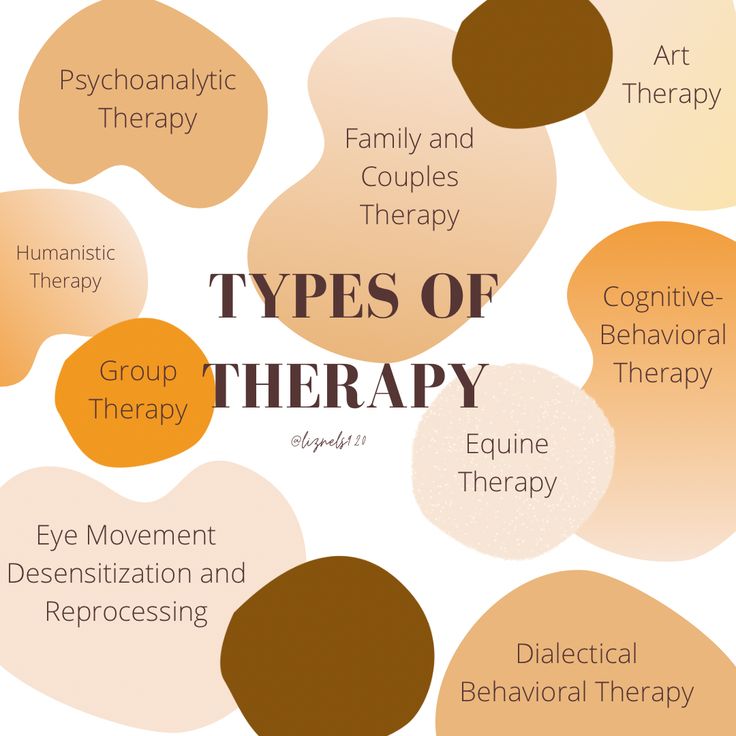Understanding Mental Types of Therapy and Their Importance
Types of therapy, also known as psychotherapy or counseling, is a crucial aspect of mental health treatment. It involves talking with a trained therapist to explore thoughts, feelings, and behaviors, with the goal of improving overall well-being.
Mental therapy is beneficial for individuals experiencing various mental health challenges, such as depression, anxiety, trauma, and addiction.
It provides a safe and supportive space for individuals to gain insight, develop coping skills, and create positive changes in their lives.
Different types of mental therapy
Different types of mental therapy:
- Cognitive Behavioral Therapy (CBT): Focuses on identifying and changing negative thought patterns and behaviors.
- Psychoanalysis: Explores unconscious thoughts and emotions to gain insight into underlying psychological issues.
- Dialectical Behavior Therapy (DBT): Helps individuals manage emotions, develop healthy coping strategies, and improve interpersonal skills.
- Acceptance and Commitment Therapy (ACT): Encourages acceptance of thoughts and emotions while committing to values-based actions.
- Mindfulness-Based Stress Reduction (MBSR): Uses mindfulness techniques to reduce stress and promote overall well-being.
- Group Therapy: Provides support and encouragement through sharing experiences in a group setting.
- Art Therapy: Utilizes creative expression to explore emotions and promote healing.
- Online Therapy: Offers convenient access to therapy sessions through online platforms.
Cognitive Behavioral Therapy (CBT)
Cognitive Behavioral Therapy (CBT) is a type of psychotherapy that focuses on the connection between thoughts, emotions, and behaviors.
It aims to help individuals identify and change negative thought patterns and develop healthier coping mechanisms. CBT is typically short-term and structured, with sessions that involve goal setting, practicing new skills, and challenging unhelpful beliefs.
Benefits and limitations of CBT
Benefits of CBT:
- CBT has proven effective in treating various mental health conditions such as anxiety disorders, depression, and phobias.
- It helps individuals develop practical skills to manage distressing symptoms and improve overall well-being.
- CBT can tailored to specific issues and is often combined with other treatment approaches.
Limitations of CBT:
- CBT requires active participation and commitment from the individual to see results.
- It may not be suitable for individuals with severe mental health conditions or those who prefer a more insight-oriented therapy approach.
- Some individuals may find CBT techniques too structured or impersonal.
Overall, CBT is a widely recognized and evidence-based therapy approach that can be beneficial for many individuals struggling with mental health issues.
It is important to consult with a licensed mental health professional to determine if CBT is the right fit for your specific needs.
Psychoanalysis
Psychoanalysis is a therapeutic approach that aims to explore the unconscious mind and its influence on human behavior and mental health. Developed by Sigmund Freud, psychoanalysis delves into deep-rooted thoughts, emotions, and experiences that may be hidden from conscious awareness.
This therapy emphasizes the importance of understanding the unconscious aspects of the mind to promote psychological healing and personal growth.
Overview of Psychoanalysis
Psychoanalysis is a comprehensive approach that involves frequent meetings between the therapist and the patient, typically scheduled multiple times a week.
The therapeutic process unfolds through open-ended discussions, where the patient is encouraged to freely express thoughts, emotions, and dreams. The therapist listens attentively, observing patterns, conflicts, and underlying feelings that may emerge.
During these sessions, the therapist aims to help the patient develop insight into their unconscious motivations and conflicts. By exploring unresolved issues from the past, such as childhood experiences and repressed memories, psychoanalysis seeks to bring unconscious material into conscious awareness.
This process can lead to a deeper understanding of oneself and the underlying factors contributing to psychological distress.
Key concepts and techniques used in Psychoanalysis
Psychoanalysis incorporates several key concepts and techniques to facilitate the therapeutic process. Some of these include:
- Free Association: Patients are encouraged to speak freely and uninhibitedly, allowing thoughts, feelings, and memories to surface without censorship. This technique promotes access to unconscious material and the exploration of hidden conflicts.
- Dream Analysis: Dreams are considered a window into the unconscious mind. Psychoanalysis places great emphasis on the interpretation of dreams to uncover symbolic meanings and unconscious desires.
- Transference: Transference occurs when a patient unconsciously projects their feelings and attitudes onto the therapist. This phenomenon allows the therapy to explore unresolved issues and past relationships that may be influencing the patient’s current emotions and behaviors.
- Interpretation: The therapist provides interpretations of the patient’s thoughts, behaviors, and dreams, helping them gain insight into unconscious motivations and conflicts. These interpretations aim to foster personal growth and alleviate emotional distress.
- Working Through: Working through involves revisiting and reanalyzing past experiences and conflicts over time. By processing and integrating this material, it becomes possible to achieve lasting psychological change and resolution.
Psychoanalysis offers a unique and in-depth approach to therapy, aiming to uncover and resolve underlying unconscious conflicts.
While this therapeutic modality requires time and commitment, it can yield profound insights and contribute to lasting personal transformation.
Dialectical Behavior Therapy (DBT)
Dialectical Behavior Therapy, or DBT, is a type of therapy that was originally developed to treat individuals with borderline personality disorder (BPD).
However, it found to be effective in treating a range of mental health disorders and emotional dysregulation.
Understanding Dialectical Behavior Therapy
DBT combines cognitive-behavioral therapy techniques with the concept of dialectics, which emphasizes finding a balance between acceptance and change.
It is based on the idea that individuals struggling with emotional regulation may have difficulty managing intense emotions and may engage in self-destructive behaviors as a means of coping.
The therapeutic process in DBT involves individual therapy sessions, skills training groups, phone coaching, and consultation teams. The main focus of DBT is to help individuals learn new skills in four key areas:
- Mindfulness: Developing awareness of the present moment and accepting it without judgment.
- Distress Tolerance: Learning to tolerate distressing situations without resorting to self-destructive behaviors.
- Emotion Regulation: Developing strategies to manage and regulate intense emotions.
- Interpersonal Effectiveness: Enhancing communication skills and building healthy relationships.
Application and Effectiveness of DBT
DBT has shown to be effective in treating various mental health conditions, such as borderline personality disorder, substance use disorders, eating disorders, depression, anxiety disorders, and self-harm behaviors.
It can help individuals improve their emotional regulation skills, reduce impulsive behaviors, and enhance interpersonal relationships.
Research studies have shown that DBT can lead to significant improvements in reducing self-harm behaviors, decreasing suicide attempts, and improving overall functioning and quality of life.
In conclusion, Dialectical Behavior Therapy is a highly effective therapeutic approach that combines cognitive-behavioral techniques with acceptance and change strategies.
It provides individuals with the skills they need to manage intense emotions, improve their coping mechanisms, and build more fulfilling relationships.
Mindfulness-Based Therapy
Mindfulness-Based Therapy is a type of therapy that focuses on cultivating mindfulness, which is the practice of being fully present and non-judgmental in the moment.
This therapy approach incorporates various mindfulness techniques and practices to help individuals gain self-awareness, reduce stress, and improve mental well-being.
Some common practices and benefits of Mindfulness in therapy include:
- Mindfulness meditation: This involves focusing one’s attention on the present moment, observing thoughts and sensations without judgment.
- Breathing exercises: Deep breathing techniques can help individuals relax and be more present.
- Body scan: This practice involves slowly scanning one’s body to become aware of physical sensations and areas of tension.
- Stress reduction: Mindfulness can help individuals manage stress by promoting relaxation and a sense of calm.
- Emotional regulation: By cultivating mindfulness, individuals can become more aware of their emotions and learn to respond to them in a healthier way.
- Improved focus and concentration: Mindfulness techniques can enhance attention and mental clarity, leading to better concentration and productivity.
Mindfulness-Based Therapy has gained popularity for its effectiveness in treating a range of mental health conditions, such as anxiety, depression, and stress-related disorders. It can be practiced individually or as part of a group therapy setting.
To learn more about mindfulness and its benefits, check out this Psychology Today article that explores the science behind mindfulness.
Family Systems Therapy
Family Systems Therapy is an approach to therapy that focuses on the family as a whole, rather than individual family members.
It recognizes that individual behaviors and emotions are influenced by the larger family system and seeks to improve communication and dynamics within the family unit.
The goal of Family Systems Therapy is to resolve conflicts, improve relationships, and promote overall family well-being. This therapeutic approach used to address issues such as marital problems, parent-child conflicts, and family trauma.
Art Therapy
Art therapy is a form of Types of therapy that utilizes various artistic mediums as a tool for expression and healing. It involves the use of art, such as painting, drawing, or sculpting, to help individuals explore their emotions, address psychological conflicts, and promote personal growth.
Art therapists are trained professionals who guide individuals through the process of creating art and help them interpret and understand the symbolic meaning behind their creations.
This form of therapy can be beneficial for individuals of all ages and can be particularly effective for those who have difficulty expressing their feelings verbally.
Art therapy provides a non-verbal means of communication and allows individuals to tap into their subconscious mind, accessing emotions and memories that may be difficult to express in words.
The creative process involved in art-making can be therapeutic in itself, providing a sense of relaxation, mindfulness, and self-expression.
Additionally, the artwork created during therapy sessions serves as a visual representation of the individual’s inner experiences, allowing therapists to gain insights into their thoughts, feelings, and experiences.
Some of the benefits of art therapy include:
- Self-exploration and self-discovery
- Stress reduction and relaxation
- Emotional release and catharsis
- Improved self-esteem and self-confidence
- Enhanced problem-solving and coping skills
- Increased self-awareness and insight
Art therapy can used to address a wide range of mental health concerns, including anxiety, depression, trauma, grief, and relationship issues.
It is often integrated into other therapeutic approaches, such as cognitive-behavioral therapy (CBT), dialectical behavior therapy (DBT), or psychodynamic therapy, to enhance the effectiveness of treatment.
If you’re curious to learn more about art therapy and its potential benefits, you can explore resources like the American Art Therapy Association or consult with a licensed art therapist in your area. They can provide further information about how art therapy can tailored to meet your specific needs and goals.
Art therapy is a creative and powerful form of mental therapy that allows individuals to express themselves, gain insight into their emotions, and promote personal growth.
Whether you consider yourself an artist or not, art therapy can provide a unique and transformative therapeutic experience that may complement and enhance your overall mental well-being.
EMDR Therapy (Eye Movement Desensitization and Reprocessing)
EMDR Therapy, also known as Eye Movement Desensitization and Reprocessing, is a type of therapy that is primarily used to treat trauma and post-traumatic stress disorder (PTSD).
This therapy approach involves a series of eye movements or other bilateral stimulation techniques that help individuals process and cope with traumatic memories and experiences.
EMDR has shown to be effective in reducing the symptoms of trauma and PTSD, allowing individuals to heal and move forward in their lives.
Conclusion
In conclusion, it is essential to choose the right Types of therapy and approach that best suits an individual’s needs when seeking mental health support. The field of mental therapy offers a diverse range of options, each designed to address specific concerns and provide healing and support.
By understanding the various types of mental therapy available, individuals can make informed decisions and find the most effective treatment for their mental well-being. Remember, seeking therapy is a courageous step towards self-care and personal growth
Resources and References: Americal Psychological Association, Everyday Health, GoodTherapy, MindBodyGreen.


Leave a Reply